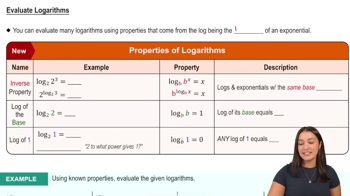Textbook Question
In Exercises 9–18, write the function in the form y = f(u) and u = g(x). Then find dy/dx as a function of x.
y = (4 − 3x)⁹
 Verified step by step guidance
Verified step by step guidance Verified video answer for a similar problem:
Verified video answer for a similar problem:



 5:02m
5:02mMaster Intro to the Chain Rule with a bite sized video explanation from Patrick
Start learning